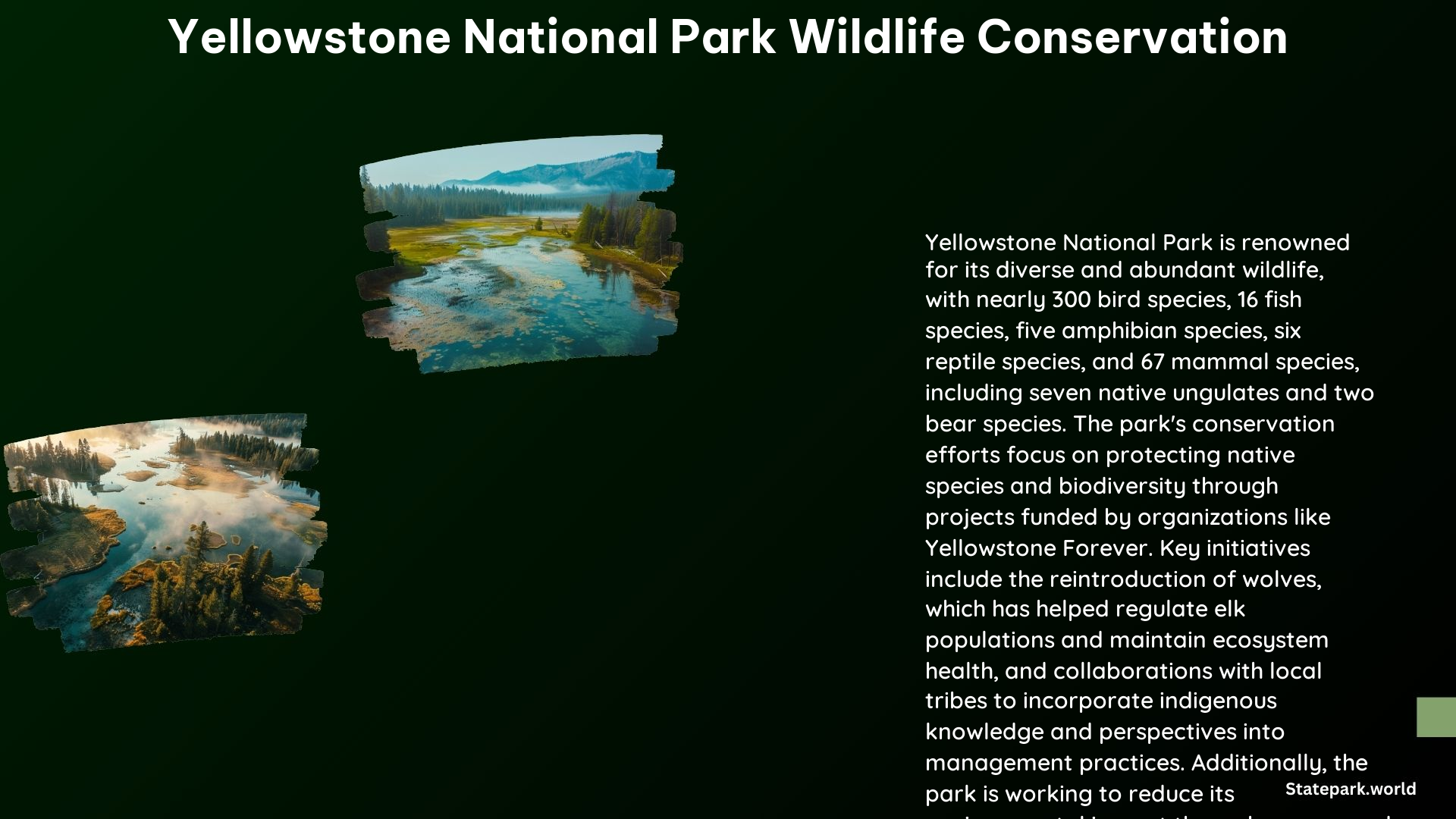Yellowstone National Park is a natural wonder that boasts an abundance of diverse wildlife, including nearly 300 species of birds, 16 species of fish, five species of amphibians, six species of reptiles, and 67 species of mammals. As the world’s first national park, Yellowstone has played a crucial role in the conservation of public lands and wild spaces. This blog post explores the park’s efforts to protect its native fish species, conserve its wildlife, and maintain a healthy ecosystem for the future.
Native Fish Species: The Foundation of Yellowstone’s Ecosystem
Yellowstone’s native fish species are essential to the park’s natural food webs and have significant local economic importance. The park is home to 16 native fish species, including the iconic Yellowstone cutthroat trout, which is a keystone species in the ecosystem. These native fish species underpin the natural food webs, providing sustenance for a variety of predators, from bears to birds.
Conservation Measures: Protecting Yellowstone’s Wildlife and Ecosystem

Yellowstone National Park has implemented various conservation measures to protect its wildlife and ecosystem. These measures include:
- Energy Conservation: The park aims to reduce energy consumption by making facilities more energy-efficient and increasing the use of renewable energy sources like solar and microhydro power.
- Water Conservation: Yellowstone plans to reduce potable water consumption by using water-smart technology and design, including replacing toilets and faucets with more efficient models and repairing leaks in old water pipes.
- Fleet and Transportation: The park is working to reduce fossil fuel consumption by decreasing the size of its fleet, replacing vehicles with more fuel-efficient ones, and promoting fuel-efficient driving practices.
- Environmental Purchasing and Waste Reduction: Yellowstone minimizes waste by purchasing environmentally-preferred items and reducing waste in its operations.
Wildlife Conservation and Research: Protecting Yellowstone’s Remarkable Species
Yellowstone Forever, a non-profit organization, funds critical conservation and research projects to protect the park’s remarkable wildlife. These projects focus on the conservation of native ungulate species, bear species, and other wildlife. The reintroduction of wolves in 1995 has been a significant success story, demonstrating the interconnectedness of species in ecosystems.
Historical Role in Conservation: Setting the Standard for National Parks
Yellowstone National Park has played a critical role in the conservation of public lands and wild spaces. Established in 1872, it was the world’s first national park, setting a precedent for the protection of other iconic destinations. The park’s management practices have evolved over time, shifting from artificial population control to Ecological Process Management, which allows native species to regulate themselves naturally.
Modern Conservation Efforts: Adapting and Improving Management Practices
Today, Yellowstone National Park continues to adapt and improve its management practices. The park is working to involve Native Tribes in its management, recognizing their historical role as stewards of the land and their ongoing connections to the area. Visitors are encouraged to view wildlife from a safe distance, using binoculars or telephoto lenses to avoid disturbing the animals.
Yellowstone National Park’s commitment to wildlife conservation and ecosystem preservation is a testament to its enduring legacy as a global leader in environmental protection. By maintaining a healthy and diverse ecosystem, the park ensures that its remarkable wildlife and natural wonders will be enjoyed by generations to come.
References:
- National Park Service. (2024). Wildlife – Yellowstone National Park. Retrieved from https://www.nps.gov/yell/learn/nature/wildlife.htm
- Yellowstone Forever. (n.d.). Protect Yellowstone’s Ecosystem & Wildlife. Retrieved from https://www.yellowstone.org/protect-wildlife/
- National Park Service. (n.d.). Conservation Measures – Yellowstone. Retrieved from https://www.nps.gov/yell/getinvolved/conservation-measures.htm
- Yellowstone Forever. (n.d.). Wildlife Conservation & Research. Retrieved from https://www.yellowstone.org/wildlife-conservation-research/
- Travel Wyoming. (2022). Yellowstone’s vital role in conservation as we know it. Retrieved from https://travelwyoming.com/article/yellowstones-role-conservation/.
